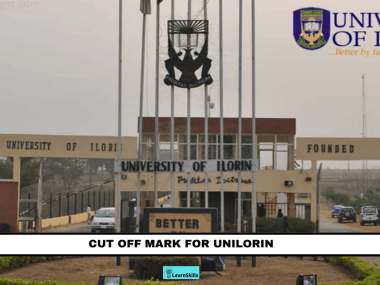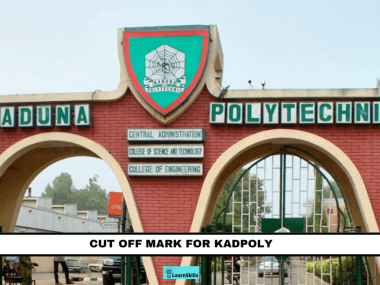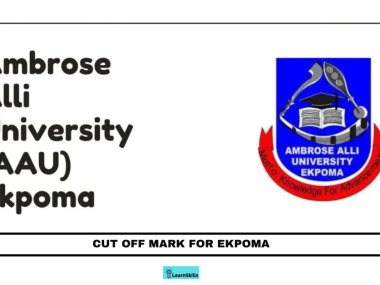If you’re planning to study at Taraba State University, knowing the cut-off mark is crucial for your admission. For the 2025/2026 academic year, the official cut-off mark is set at 140 for all degree courses.
Understanding the cut-off mark helps you gauge your chances of admission and prepare accordingly. Keep in mind that meeting the cut-off is just the first step in the process.
Understanding Cut-Off Marks
Cut-off marks are essential in the university admission process. They determine who can apply and who has a chance of being admitted.
Let’s explore what cut-off marks are, their significance in university admissions, and how they differ among institutions.
Defining Cut-Off Marks
A cut-off mark is a minimum score required for admission into a university. For example, Taraba State University (TASU) has set its cut-off mark at 140 for all degree programs.
This score is usually based on your performance in the Unified Tertiary Matriculation Examination (UTME), managed by the Joint Admission and Matriculation Board (JAMB). If you score below the cut-off, you are typically ineligible for admission to that university program.
Role in University Admissions
Cut-off marks play a crucial role in filtering applicants. They help universities manage the number of candidates.
By enforcing a cut-off mark, universities ensure that only those who meet certain standards can compete for limited spots.
For instance, prestigious institutions like the University of Lagos and Obafemi Awolowo University often have higher cut-off marks, reflecting their competitive nature. This process helps balance the number of applicants and the capabilities required for various courses.
Variations Across Universities
Cut-off marks vary significantly between universities and courses. While TASU has set its cut-off at 140, other universities might require higher scores.
For instance, the University of Ibadan may impose a cut-off mark above 200 for some programs, indicating greater competition.
Additionally, specialized courses often have their specific cut-off standards. It is critical to check the cut-off marks for your desired program. Understanding these variations can help you set realistic goals for your UTME score and plan your application strategy effectively.
Admission Requirements for Taraba State University
When applying to Taraba State University, it is important to understand the admission requirements. This includes general criteria and specific cut-off marks you need to meet for a successful application.
General Criteria
To gain admission into Taraba State University, you must meet some basic requirements. You will need to have completed your secondary education with a West African Senior School Certificate Examination (WASSCE) or its equivalent.
Your JAMB (Joint Admissions and Matriculation Board) score is a critical factor. You must register and sit for the Unified Tertiary Matriculation Examination (UTME). Being eligible for admission often requires a minimum JAMB score, which is currently set at 140 for all degree programs.
For Direct Entry (DE) applicants, you often need an NCE (Nigerian Certificate in Education) or equivalent qualifications.
Specifics of Cut-Off Marks
Taraba State University has set specific cut-off marks that you need to be aware of. The JAMB cut-off mark is currently 140. This means you must score at least 140 to be considered for admission.
After scoring above the cut-off, you will also need to take part in the Post UTME screening. This screening allows the university to further evaluate your readiness for your chosen course.
It’s important to keep track of dates, especially for application submissions and Post UTME screenings. Make sure to check the university’s official website for any updates on these requirements.
Comparative Analysis of Cut-Off Marks
Cut-off marks play a crucial role in university admissions. Understanding how Taraba State University (TASU) compares to other institutions helps in making an informed choice about where to apply.
Federal vs. State Universities
Federal universities often set higher cut-off marks compared to state universities. This can be due to the larger applicant pool and the high level of competition.
For instance, Ahmadu Bello University typically has cut-offs ranging from 180 to 200 for various courses. In contrast, state universities like Taraba State University set their cut-off at 140. This difference can impact your chances of admission based on your score.
Here’s a brief comparison:
| University Type | Typical Cut-Off Mark |
|---|---|
| Federal Universities | 180 – 200 |
| Taraba State University | 140 |
Knowing these differences can help you gauge where your score fits and choose the right path for your education.
Taraba State University vs. Other Institutions
When comparing Taraba State University (TASU) to other institutions, such as the Federal University of Petroleum Resources, it’s clear that cut-off marks reflect academic expectations.
TASU’s cut-off mark of 140 makes it accessible for many students who may not meet the higher thresholds of other universities. In contrast, institutions like the Federal University of Petroleum Resources might require a cut-off as high as 160 or more.
This accessibility can attract a diverse range of applicants. Here’s a snapshot:
| Institution | Cut-Off Mark |
|---|---|
| Taraba State University (TASU) | 140 |
| Federal University of Petroleum Resources | 160 |
These numbers are essential when considering where to apply based on your UTME score.
Strategies for Meeting Cut-Off Marks
To successfully meet the cut-off marks for Taraba State University, focus on two main strategies: effective preparation for the Joint Admissions and Matriculation Board (JAMB) exams and understanding post-UTME processes. These steps will increase your chances of Admission.
Preparation for JAMB
Preparing well for the JAMB exam is crucial. Here are key tips to enhance your readiness:
- Study Plan: Create a detailed study schedule. Allocate specific times for each subject to cover the syllabus thoroughly.
- Past Questions: Solve previous years’ JAMB questions. This helps you understand exam patterns and frequently asked topics.
- Study Materials: Use recommended textbooks and online resources. Ensure they align with the current JAMB syllabus.
- Mock Exams: Take part in mock tests. This builds your exam confidence and time management skills.
- Group Study: Join study groups to share knowledge and clarify doubts. Discussing subjects with peers aids retention.
Post-UTME Considerations
After the JAMB exams, focus shifts to the Post-UTME screening. To prepare effectively, consider these strategies:
- Stay Informed: Follow the university’s official announcements regarding the Post-UTME format and requirements.
- Practice Skills: Focus on the skills tested during the Post-UTME, which often include critical reading and numerical ability.
- Interview Prep: If applicable, prepare for any interview segments. Research common questions and practice your responses.
- Past Screening Papers: Review previous Post-UTME questions for familiarity with the examination style.
- Relaxation Techniques: Manage stress with relaxation methods such as deep breathing or meditation. This can improve focus and performance on the day of the exam.
By focusing on these strategies, you can boost your chances of meeting the cut-off marks and securing admission to Taraba State University.
Impact of Cut-Off Marks on Educational Policy
Cut-off marks play a crucial role in shaping educational policies in Nigeria. They determine who gains access to higher education and can influence the quality and standards of academic programs.
Policy Implications
When universities set cut-off marks, they signal the expected level of academic performance. A low cut-off mark can lead to a wider range of students being admitted. This may increase enrollment numbers but could dilute the academic quality.
For example, Taraba State University recently received mixed reactions for lowering its cut-off mark.
Many believe this sets a precedent that may affect the university’s reputation and the value of its degrees. If local institutions continue to set low standards, it can impact the perception of graduates in the job market.
Debate on Cut-Off Mark Standards
The debate surrounding cut-off marks touches on fairness and equity. Some argue that regions with educational disadvantages should have lower cut-off marks to allow more students access to education.
However, this raises concerns about maintaining academic rigor. Institutions like the Nigerian Defence Academy and Bayero University have higher standards, which can attract better-prepared candidates.
Balancing equity and quality is key, as lower standards may lead to increased dropout rates and reduced overall performance among graduates across Nigeria.
Setting cut-off marks affects not just individual students but has broader implications for educational policies and the nation’s workforce.










